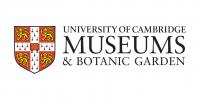Our collections of recent vertebrates provide an unusually comprehensive coverage of all living groups and are therefore a powerful resource for broad comparative research and teaching.
The majority of the specimens are osteological, including more than 130 mounted mammalian skeletons on public display. This emphasis reflects the tradition of research in the Museum on comparative and functional anatomy. The integrity of individual skeletons has been maintained to a very high standard, particularly among the mammals, making them suitable for research involving quantitative measurements of whole skeletons (for example, allometric studies). Of equal importance is the high standard of documentation of the older material: specimens are frequently described in detailed letters or field notes that are part of the Museum’s historical manuscript holdings.
The fish collections are mostly stored in spirit. Of prime importance are Darwin’s fish from the Beagle voyage, described by Leonard Jenyns. Even now these remain important for the taxonomy of South American species. Many of the forty specimens are types. Other significant collections include Chinese fish from the Vachell Collection, and African fish collected by J.S. Budgett including historically important specimens that were used to document the development of the lungfish.
Among the amphibians and reptiles, the most notable specimens are those collected by Hans Gadow (Curator, 1882-1927) who worked extensively in South America, especially in Mexico, areas where collections of this date are rare. Hugh B. Cott contributed a number of additional specimens including material of the Nile crocodile, a species on which he published a number of pioneering and much cited papers. His field notes relating to our specimens provided much of the early documentation for the behaviour of these animals.
The Museum houses a collection of monotreme and marsupial mammals, collected from Australia and Tasmania by Morton Allport and others. These document the 19th century distribution of species that are now much more restricted. They include skeletons and several unusually well preserved skins of the thylacine, or marsupial ‘wolf’, which is now presumed extinct.
Several collections provide important historical data for the fauna of other regions. These include material from the Skeat Expedition to the Malay Peninsula, primates from Borneo and Sarawak collected by Charles Hose, and the collections of Ivan T Sanderson from West Africa, the Cameroons, Cuba, Haiti, and the zoogeographically important islands of the Greater Antilles. The Sanderson collection contains such rare and scientifically interesting smaller mammals as otter shrews and solenodons.





